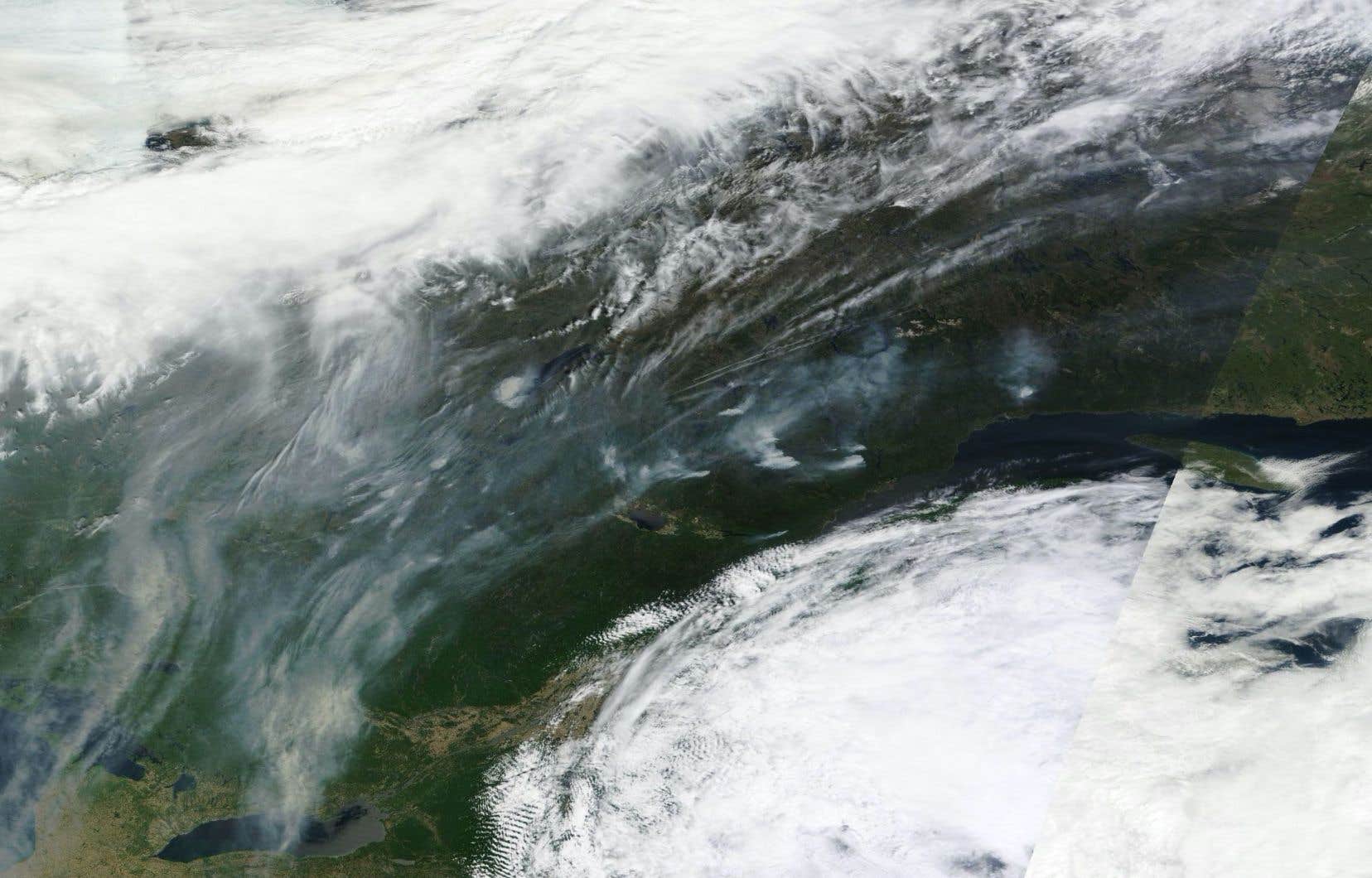The forest fire season is starting at full speed in Quebec. The area affected is already ten times greater as of Monday than the annual total for the past ten years. The smoke spreads across the province and degrades air quality. Overview of the situation in maps and graphics.
In Quebec, the start of the forest fire season is truly exceptional. As of Monday, approximately 160,000 hectares had been “affected” by the wildfires south of 51e parallel, according to the Society for the Protection of Forests against Fire (SOPFEU). At this time, in the last decade, an average of less than 250 hectares was reported affected.
In fact, the season is off to such a good start that the results for the young year are already ten times higher than the average area affected over the whole season (15,815 hectares) from 2013 to 2022. It should be noted that the annual average of the areas affected varies enormously over the years (95,000 hectares per year from 1999 to 2008, 34,000 hectares per year from 2008 to 2017).
More than 150 wildfires raged south of 51e Quebec parallel, Monday afternoon. Since the start of the 2023 season, more than 400 fires have been recorded in the province: twice as many as the average toll for the past 10 years, at the same date. With climate change, the number of large forest fires will increase considerably in the country. In particular, warmer and drier conditions will lengthen the fire season.
Credit: Canadian Wildland Fire Information System, Natural Resources Canada
After several eventful days, the risk of forest fires is still at its height. In the western half of Quebec, they were considered “extreme” by Quebec authorities on Monday. The additional fires that could break out there would therefore be of high intensity and rapid spread. Very difficult to stop, these blazes could only be controlled on their flanks, and not frontally.
Credit: Canadian Wildland Fire Information System, Natural Resources Canada
The braziers of Quebec generate plumes of smoke visible from space. In this image, taken Sunday by NASA’s Terra satellite, you can clearly see smoke from fires northeast of Lac Saint-Jean and west of Lac Mistassini.
Credits: Worldview NASA
Smoke from forest fires reduces air quality in most parts of southern Quebec. This map, produced by a team from the University of British Columbia, illustrates the concentration of fine particles of less than 2.5 micrometers (PM2.5) found at ground level on Monday morning. Only the pollution produced by forest fires is represented. The concentration in the most affected regions (in brown) is more than ten times the World Health Organization recommendation for daily exposure, which is 15 µg/m3.
Credits: Firesmoke, Weather Forecast Research Team, University of British Columbia
